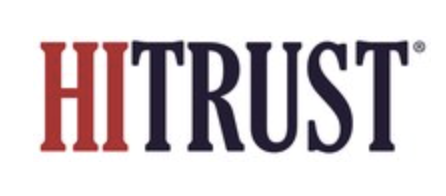Frameworks Explained
HiTRUST CSF
HITRUST CSF is a certifiable, risk-based framework that harmonizes controls across HIPAA, NIST, ISO, PCI, and more. Its goal is to provide a single, high-assurance certification (e.g., i1 or r2) accepted widely across healthcare ecosystems and third-party risk programs.
What is HiTRUST CSF’s target audience & industries?
Healthcare & life sciences (payers, providers, pharma), health tech, and vendors handling PHI/PII who face demanding enterprise assurance requirements.
Does it apply to my organization?
Likely relevant if you:
Handle customer or regulated data and sell B2B globally
Need a market-recognized certification for enterprise/partner access
Want a risk-based security management framework
What are the benefits and risks of conducting a HiTRUST CSF Audit?
One certification mapped to many frameworks
Speeds healthcare vendor reviews and contracts
Strong, prescriptive testing and QA rigor
Consolidates overlapping audits
Market access & trust with a recognized certificate
Risk-based security aligned to your business
Avoid lost deals and procurement delays
What are the core HiTRUST CSF requirements?
Scoping via HITRUST factors: Systems, regulatory drivers, data volumes/sensitivity (PHI/PII), hosting, and organizational complexity.
Assessment type selection: i1 (foundational, moderate assurance) or r2 (comprehensive, high assurance).
Requirement statements & tailoring: MyCSF-driven control selection, inheritance where applicable, maturity targets across Policy, Process, Implemented, Measured, Managed.
Policies, standards, procedures: Prescriptive documentation mapped to requirement statements with ownership and review cycles.
Implementation evidence: Screenshots with timestamps, system-of-record exports, configuration baselines, logs, tickets—traceable to requirement IDs.
Measurement & management: Defined metrics, monitoring, trend analysis, and corrective action workflows.
Validated assessment: Authorized External Assessor testing; sampling strategy; issue tracking.
HITRUST QA review: Respond to QA comments, clarifications, and evidence requests; finalize scoring.
Certification/letter issuance: i1 or r2 certification; maintenance windows and interim monitoring.
Ongoing program: Control operation, exceptions management, periodic reassessment per HITRUST cadence.
What are the general guidelines for executing a HiTRUST CSF audit ?
Select assessment type: i1 (foundational) vs r2 (high assurance) based on risk and customer requirements.
Scope with HITRUST factors: Systems, data types (PHI/PII), regulatory drivers, org complexity, hosting model.
Control selection & tailoring: Use MyCSF to determine requirement statements and maturity targets.
Policy/procedure & implementation: Write required policies; implement controls with roles, workflows, and tool evidence.
Evidence rigor: Ensure traceable artifacts, screenshots with timestamps, exports showing population completeness, and test logs.
Readiness assessment: Identify PRISMA gaps across Policy, Process, Implemented, Measured, Managed.
Validated assessment: Engage an Authorized External Assessor to test and submit to HITRUST QA.
QA & remediation: Respond quickly to QA comments; provide clarifications or additional evidence.
Certification & maintenance: Track corrective actions, operate controls continuously, and plan reassessments per HITRUST cadence.
Leverage mappings: Reuse HITRUST evidence for HIPAA, SOC 2, ISO 27001 where mapped.
What are estimated timelines to complete a SOC 1 audit?
Startup: i1: 3–5 months - r2: 9–12 months
Small: i1: 3–6 months - r2: 9–12 months
Medium: i1: 6–9 months - r2: 10–14 months
Large: i1: 9–12 months - r2: 12–18 months
What are the typical costs?
Costs vary by size, scope, and readiness by organizations: (i1 / r2)
Startups: 1 - 25 employees, single product, 1 prod environment, 1 region, few to no vendors - 18k–$50k / $40k–$85k
Small Companies: <100, 1–2 products, 1–2 environments, low vendor count - $80k–$160k / $250k–$450k
Medium Companies: 100 - 1,000 employees, multi-product, multi-region, moderate vendor count - $160k–$300k / $350k–$600k
Large Companies: >1,000 employees, complex/regulatory environment, high vendor count - $300k–$600k+ / $600k–$900k+
HITRUST QA rigor and evidence depth are substantial; consolidation benefits are strongest in complex healthcare pipelines.
(Ranges include typical readiness + audit/assessment (and operating period where applicable). Costs are USD and combine internal enablement/consulting + external auditor/assessor/cert body where relevant).
Where to Learn More
HIMSS: Cloud Security Toolkit — https://www.himss.org/resources
KPMG: HITRUST Assurance Overview — https://kpmg.com (search “HITRUST assurance programme”)
PwC: HITRUST & Assurance Insights — https://www.pwc.com (search “HITRUST”)
Click below to learn about other Frameworks?








